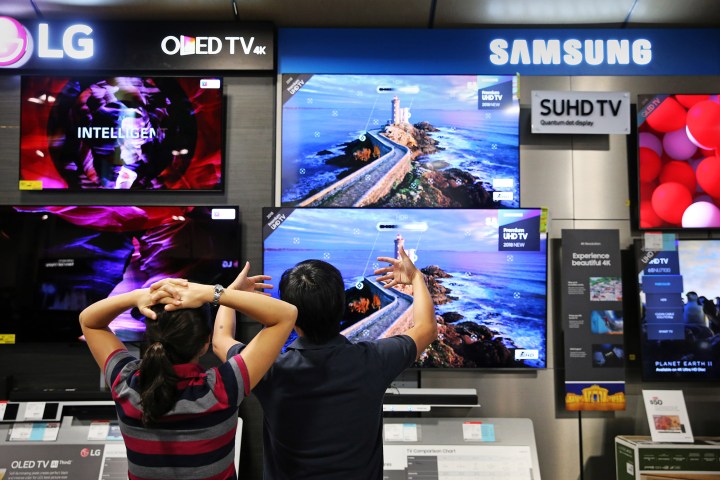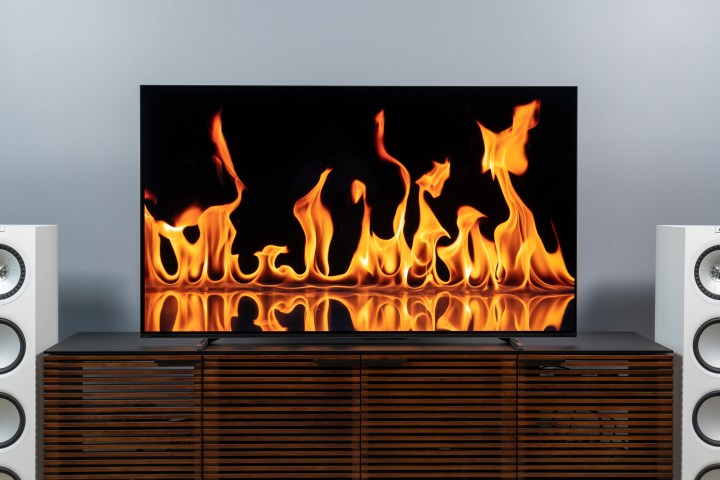
If you’ve been waiting to buy a new TV in hopes that the price might drop, you’ve probably noticed that the exact opposite has been happening.
Many TVs (and other electronics) have seen big price increases over the past six months. In fact, we’ve had to take the unusual step of revising several of our Best TVs lists to remove models that no longer fall under our price categories, like Best 4K TVs under $500 and Best 4K TVs under $1,000.
What’s going on here? Are TV makers taking advantage of COVID-driven increased demand to make a few more bucks? Or are the reported shortages in the supply chains genuinely leading to higher TV component prices? And when will prices return to normal? We spoke to several experts to find out.
While not all TVs have seen major price increases, less expensive models from brands like Hisense and TCL have been especially susceptible to changes. For instance: The 55-inch Hisense H8G — a bright and vibrant model that’s well-suited to brightly lit rooms — sold on Amazon for as little as $455 in May 2020.
But after nearly a year of fluctuating around the $550 mark, it suddenly shot up to $800 in August 2021, before finally going out of stock. If you can still find this 2020 model — which has since been discontinued and replaced with the 2021 55-inch U7G — it will likely cost between $860 and $1,160.
TCL’s excellent 55-inch 6-Series Mini-LED TV has experienced a similarly meteoric climb since the beginning of the year. From August 2020 to February 2021, this model was reliably available for $650. It then began to steadily increase, reaching a zenith of $950 before dropping to its current price of $900.
Multiple factors

“There are a few factors impacting TV price,” David Gold, president of Hisense USA, told Digital Trends. “The biggest are component prices and shipping costs — both of which have been increasing across the category over the last six months.”
On its face, that statement seems obvious. After all, a TV is made of components, and a significant number of those components have to be shipped from Asia. Some companies ship their fully assembled TVs from overseas. So increases in these two areas would naturally lead to prices increases for buyers. But dig a little deeper and you discover just how drastically components and shipping have gone up.
The costs of purchasing raw silicon, the base ingredient in all microchips, are up well over 100% in 2021, according to Stephen Mathai-Davis, co-founder and CEO of the robo-investing platform Q.ai. Some of that added cost is from rising labor prices, a side effect of COVID-19 that’s affecting industries ranging from health care to transportation.
Mathai-Davis tracks a laundry list of vital electronics components and materials like integrated circuits, copper, lead frames, and power management chips, and he claims that they have experienced price hikes of 10% to 50% in 2021.
“Aside from microchips, there is a shortage in LCD panels, especially in larger formats,” Mathai-Davis said. “LCD panels can often account for over two-thirds of a TV’s manufacturing cost.”
The global shipping industry appears to be in a state of crisis. Huge pile-ups at ports have created maritime parking lots, with dozens of container ships anchored in harbors as they patiently await their turn to be unloaded so they can resume their scheduled routes. “Ocean freight shipping costs have more than tripled,” said Gold, the Hisense exec.
Chris Larson, senior vice president of TCL North America, concurred, telling us that “shipping has become a challenge, both in terms of availability and costs for ocean and inland freight.”
No relief any time soon

So are higher prices a temporary situation, or will they return to normal once the worst of the COVID-related supply chain problems have eased? It’s a question with no easy answers.
“It is unclear if we will see pre-pandemic-level pricing in the TV industry due to the consolidation of the panel manufacturers,” Gold told us. Before the pandemic, there was apparently a glut of LCD panels on the market, however this has largely corrected itself. Still, lower prices might come to pass before the end of the year. “We do foresee prices to begin coming down in [the fourth quarter] and as early as October […] due to a decline in global demand for TVs and the upcoming holiday season in the U.S.”
TSMC is the world’s largest semiconductor manufacturer, and Mathai-Davis said that it is expected to increase costs in the near future. TSMC counts heavyweights like Apple, Nvidia, and AMD among its customers. And while those players may not design chips for the TV market, TSMC’s third-largest customer, MediaTek, does. It produces the chips that power 70% of smart TVs sold globally, according to the company’s website. MediaTek chips can be found in TVs from Samsung, TCL, Sony, and Hisense, among others.
That could be part of the reason Larson gave a less-than-rosy outlook for prices dropping anytime soon.
“We are not sure when, if ever, we can get back to the prices we saw in late 2019 or early 2020.”
Editors' Recommendations
- Everything you ever wanted to know about TV brightness, nits, and tone mapping
- Are TCL and Hisense the next LG and Samsung?
- MediaTek’s new Pentonic 1000 processor may make your next TV even better
- Why Intel Meteor Lake could pack a lot more punch for the same power
- Why Apple TV 4K is worth the premium



